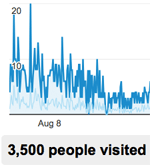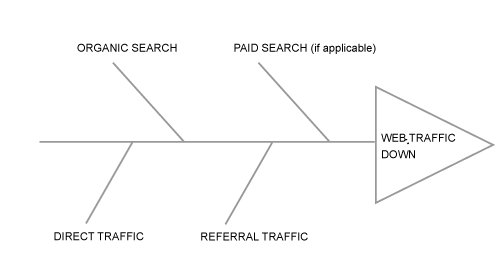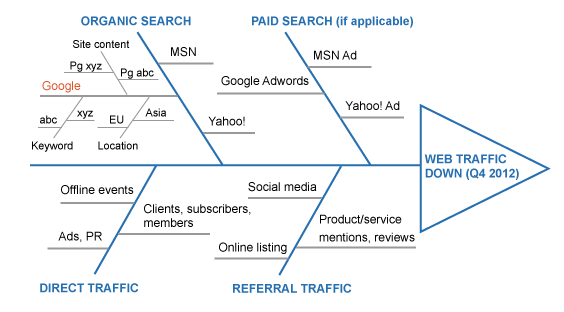Use fish-bone technique to diagnose causes of your site traffic changes

With the introduction of Google Panda and Penguin (mentioned in Google Updates and Your Search Ranking) many sites experienced significant drop in search ranking and web traffic. If your site is among those sites, and you’re aware of Google and other search engine algorithm changes, you can easily jump to the conclusion that the drop in traffic is due to search algorithm updates. While your judgement might be correct, it’s not sufficient. This post will give you an overview of how to uncover the issue, or more exactly the cause(s) of the issue by using the fish-bone diagram.
In case you’re not familiar with fish-bone diagram, this diagram, also known as the cause-and-effect or Ishikawa diagram, is basically a technique (diagram) where you visually list all major potential factors causing the issue (in this case the drop in your website traffic in Q4 2012) in an organized and systematic way. The diagram looks like a fish bone where you write down the effect/problem in the head of the fish, and each contributing cause will be represented by a bone. Depending on how complex the issue and the system is, you may have several main bones (main causes) from where smaller bones (smaller causes) branching out.
Draw your initial fish-bone diagram
Web traffic can come from different sources below. Thus, a drop in any of these sources, not just search engine algorithm changes, can easily affect the amount of traffic to your site.
- Traffic from search engines (organic and paid search)
- Direct traffic
- Referrals
You can start your Fish-bone diagram with the fundamental elements above as the main categories. From there, you can brainstorm other contributing factors.


Thank you for this valuable post. It changed my attitude
I’ve only used the Fish-bone diagram once in the past to solve other problem. I think the suggestion to make sub-diagram as above is very good. You can also cross out/erase elements that you’ve already checked and confirmed are not the ones causing the effect. This way your final diagram only contains elements that cause the effect; thus easier to navigate through each of them for further analysis.
While the idea of using fish-bone diagram is interesting as it reminds us to write down the problem and possible causes before being able to solve it, your post didn’t touch the “why” in a more meaningful way. But it’s still a good piece.